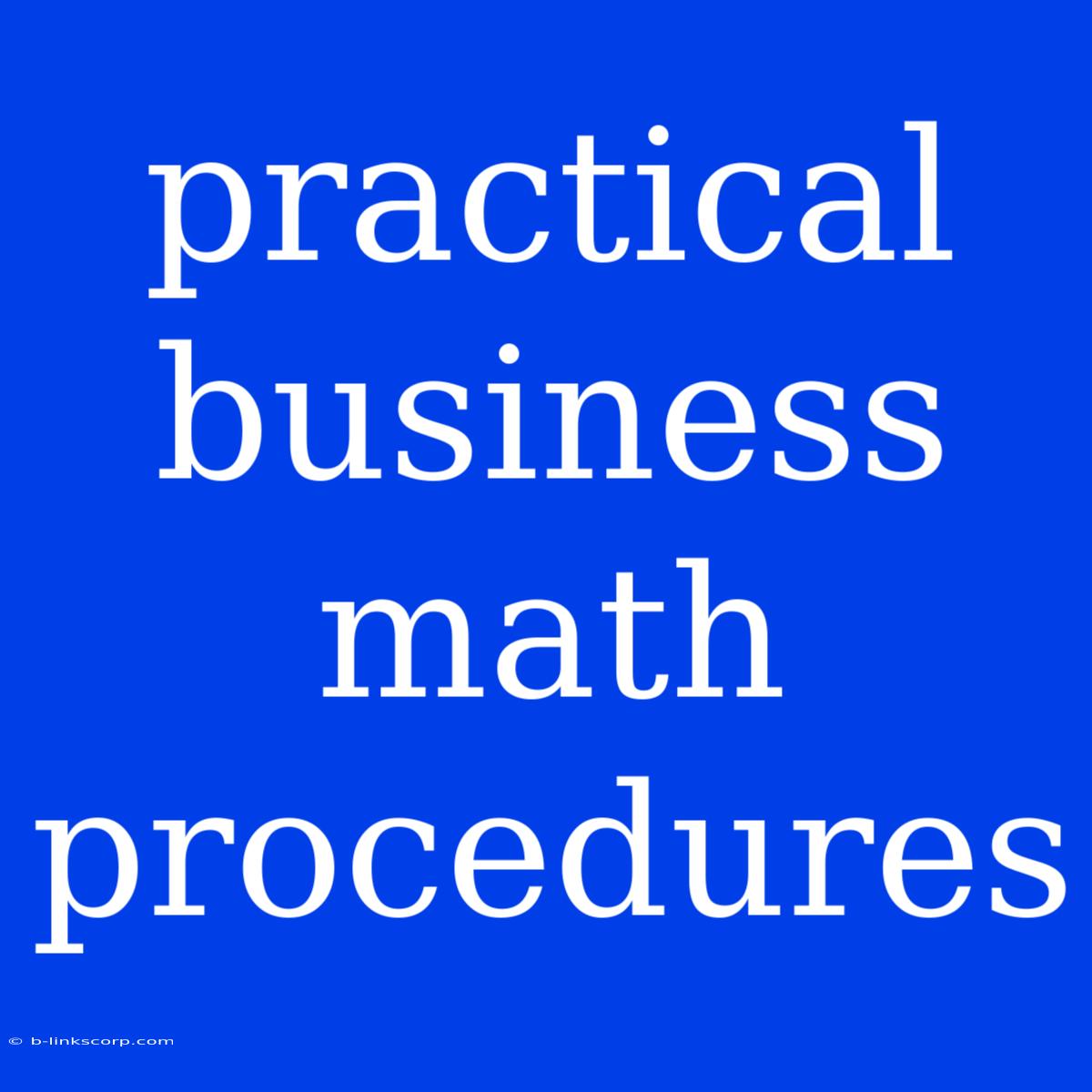Practical Business Math Procedures: Essential Skills for Success
In the world of business, a strong understanding of math is crucial for making informed decisions, managing finances effectively, and maximizing profits. While some may think that complex formulas are required, many business math procedures are surprisingly straightforward and can be easily learned.
This article will delve into some of the practical business math procedures that every entrepreneur, manager, or aspiring business professional should be familiar with.
1. Calculating Profit and Loss
Understanding profit and loss (P&L) is fundamental to any business. Here's how to calculate it:
- Profit = Total Revenue - Total Expenses
- Revenue includes all income generated from sales, services, or other sources.
- Expenses include all costs associated with running the business, such as rent, salaries, utilities, and materials.
Example:
A small bakery sells 100 loaves of bread at $3 each, generating $300 in revenue. The bakery's expenses for the day are $150.
Profit = $300 - $150 = $150
The bakery made a profit of $150 for the day.
2. Managing Inventory
Inventory management is critical for ensuring that you have enough products to meet customer demand without overstocking.
- Inventory Turnover Ratio: This ratio measures how quickly your inventory is being sold. It's calculated by dividing the cost of goods sold by the average inventory. A higher turnover ratio generally indicates better inventory management.
- Economic Order Quantity (EOQ): This formula helps determine the optimal order quantity for each product to minimize inventory holding and ordering costs.
Example:
Let's say a bookstore has an average inventory of 1000 books and its cost of goods sold is $50,000.
Inventory Turnover Ratio = $50,000 / 1000 = 50
This means the bookstore sells its entire inventory 50 times per year.
3. Analyzing Financial Statements
Understanding financial statements like the balance sheet, income statement, and cash flow statement is essential for making sound financial decisions.
- Balance Sheet: Shows the company's assets, liabilities, and equity at a specific point in time.
- Income Statement: Shows the company's revenues and expenses over a specific period of time.
- Cash Flow Statement: Shows the company's cash inflows and outflows over a specific period of time.
By analyzing these statements, you can identify trends, evaluate financial performance, and make informed decisions about investing, financing, and operations.
4. Calculating Interest and Loan Payments
Understanding interest and loan payments is essential for managing debt and making informed borrowing decisions.
- Simple Interest: Calculated on the principal amount borrowed.
- Compound Interest: Calculated on the principal amount and accrued interest.
Example:
You take out a loan for $10,000 at an interest rate of 5% per year. After one year, the simple interest would be $500. However, if the interest is compounded annually, you would owe $525 after one year.
5. Budgeting and Forecasting
Budgeting and forecasting are critical for planning and managing your finances.
- Budgeting: Involves creating a detailed plan of your expected income and expenses.
- Forecasting: Uses historical data and market trends to predict future performance.
Example:
A restaurant can create a budget by forecasting its expected revenue and expenses for the next month based on historical sales data, menu pricing, and cost of ingredients.
6. Using Spreadsheets and Financial Software
Spreadsheets and financial software can be powerful tools for managing business math tasks. They allow for:
- Calculations: Perform complex calculations, automate formulas, and analyze data.
- Visualization: Create charts and graphs to visually represent financial data.
- Collaboration: Share data and work on projects with others.
Conclusion
Mastering these practical business math procedures is essential for any business professional. By gaining a strong understanding of these concepts, you can make informed financial decisions, manage your resources effectively, and achieve long-term success.

